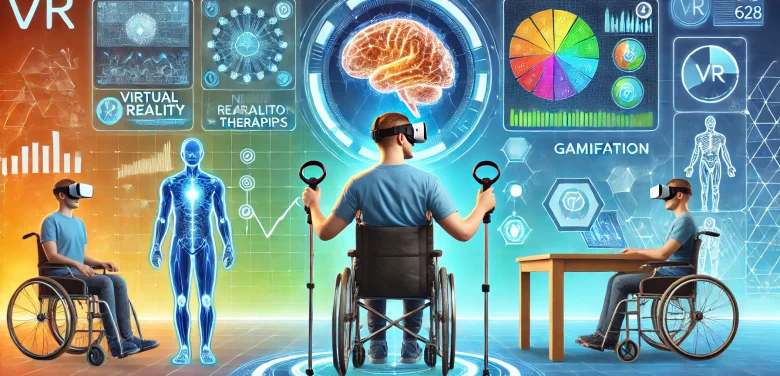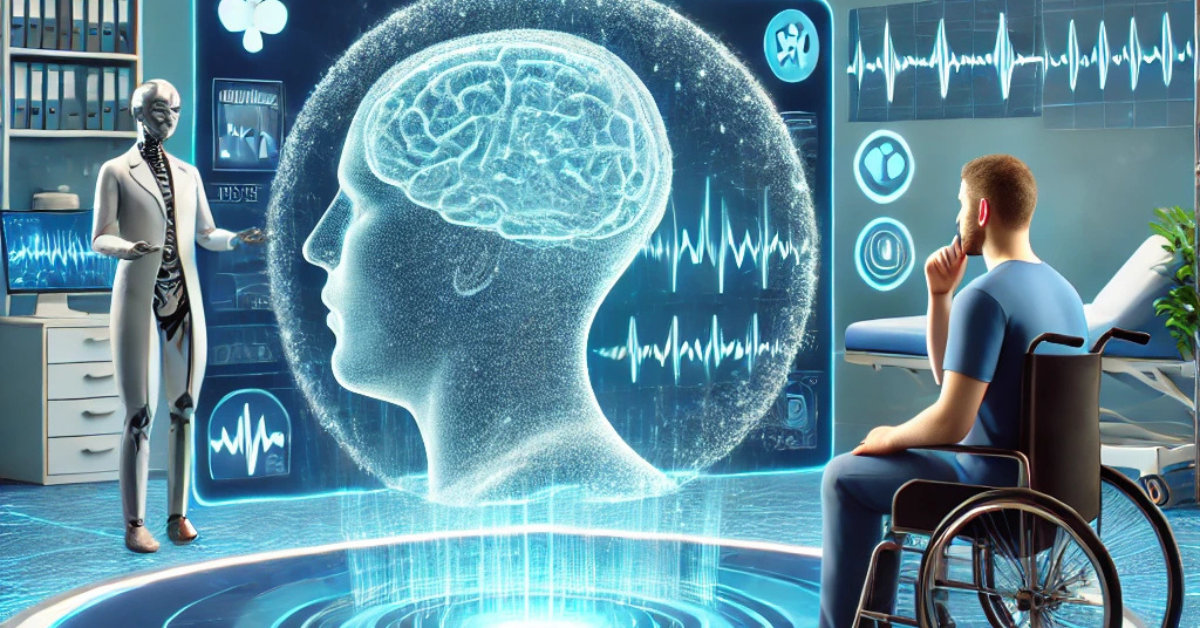Virtual Reality (VR) and Gamification in Neuro Rehabilitation – A Game-Changer for Recovery
- byDr. Aiswarya Biju, BPT, MIAP
- Sunday 26, 2025

Introduction
Imagine stepping into a virtual world where rehabilitation feels like play. For patients recovering from neurological conditions such as stroke, traumatic brain injury, or Parkinson’s disease, this is no longer science fiction—it’s reality. Virtual reality (VR) and gamification are transforming neuro rehabilitation, making therapy more engaging, effective, and enjoyable.
What is VR-Based Neuro Rehabilitation?
VR-based neuro rehabilitation uses immersive technology to create interactive environments where patients perform therapeutic exercises. These virtual scenarios can range from walking through a park to playing a game that requires hand-eye coordination. The goal is to improve motor function, balance, and cognitive skills while keeping patients motivated.

The Role of Gamification
Gamification incorporates game-like elements, such as scoring, challenges, and rewards, into therapy exercises. This approach taps into the brain’s natural reward system, making repetitive tasks more enjoyable and encouraging patients to push their limits.
Benefits of VR and Gamification in Neuro PT
- Enhanced Engagement: Patients are more likely to stick with therapy when it feels like a game.
- Improved Motor Skills: Repetitive movements in a virtual environment help rewire the brain and improve motor function.
- Real-Time Feedback: VR systems provide instant feedback on performance, helping patients correct errors and improve accuracy.
- Customization: Therapists can adjust the difficulty level and type of exercises to match the patient’s abilities and goals.
Applications in Neuro Rehabilitation
- Stroke Recovery: VR games that involve reaching, grasping, or walking can help patients regain lost motor skills.
- Parkinson’s Disease: Balance and coordination exercises in a virtual environment reduce the risk of falls.
- Traumatic Brain Injury: Cognitive games improve memory, attention, and problem-solving skills.
- Multiple Sclerosis: VR-based exercises help manage fatigue and improve mobility.
Case Study: The Success of VR in Stroke Rehabilitation
A recent study published in the Journal of NeuroEngineering and Rehabilitation found that stroke patients who used VR-based therapy showed significant improvements in upper limb function compared to those who received traditional therapy. The immersive nature of VR kept patients engaged, leading to better adherence and outcomes.
The Future of VR in Neuro PT
As VR technology becomes more affordable and accessible, its use in neuro rehabilitation is expected to grow. Future developments may include:
- AI Integration: Smarter systems that adapt to the patient’s progress in real-time.
- Multiplayer Games: Virtual therapy sessions where patients can interact and compete with others.
- Home-Based VR Systems: Portable devices that allow patients to continue therapy at home.
Conclusion
Virtual reality and gamification are revolutionizing neuro rehabilitation, offering patients a fun and effective way to recover. By combining cutting-edge technology with evidence-based therapy, VR is helping patients regain their independence and improve their quality of life.
Let me know if you’d like me to continue with the next article!
New chat
- Aquatic Therapy – A Low-Impact Solution for Pain Relief and Rehabilitationby Dr. Aiswarya Biju, BPT, MIAP
- Cardiac Telerehabilitation – Revolutionizing Heart Health Recoveryby Dr. Aiswarya Biju, BPT, MIAP
- Blood Flow Restriction (BFR) Training – A Breakthrough in Orthopedic Rehabilitationby Dr. Aiswarya Biju, BPT, MIAP
- Precision Rehabilitation in Orthopedic Physical Therapy – The Future of Personalized Recoveryby Dr. Aiswarya Biju, BPT, MIAP
- Virtual Reality (VR) and Gamification in Neuro Rehabilitation – A Game-Changer for Recoveryby Dr. Aiswarya Biju, BPT, MIAP








